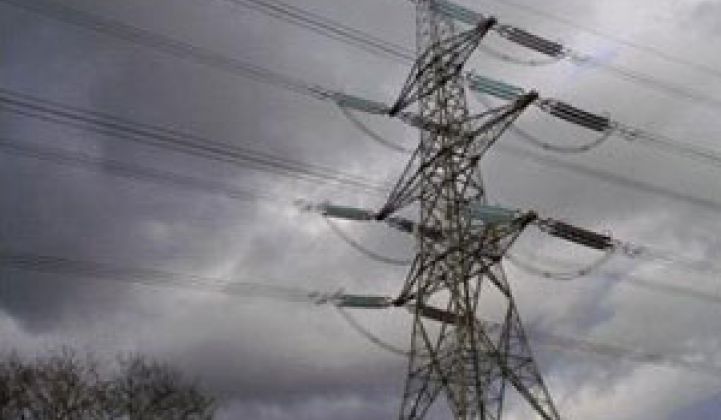With over $4 billion in Washington DC's stimulus money now available for smart grid improvements and innovations, the burden now falls on the states to use these funds effectively and efficiently. The goal, as Smart Grid News' Stimulus Scorecard makes clear, is to help consumers, utilities, the nation and the planet win.
Given that the world is moving to an Electricity Economy, modernizing the grid is one of the smartest things any state can do to ensure it will remain globally competitive. But which states have made the most progress? And which are now in the best position to deploy recently released stimulus dollars productively?
I asked a cross section of the brightest smart grid experts around the country for the 10 "smartest" states in America. To my surprise, there was a strong consensus about who's leading the charge toward a modernized electricity system. So, without further hesitation, here are the top ten smart grid states, as measured by their progress in policy, planning and implementation:
Tier 1
California: The Golden State is at the top of everyone's list. On the policy side, regulators are out in front, pushing new smart grid practices. For their part, the state's three big utilities – SCE, SDGE and PG&E – have each developed best practice studies and frameworks that can help the rest of the country grasp the benefits of smart grid improvements. The three utilities are also rolling out smart meters to all of their customers. And, in terms of stimulus readiness, the state's governor, Arnold Schwarzenegger, has vowed to get more stimulus money than any other state in the nation.
Texas: The Lone Star State is just behind California as the current smart grid leader. From a policy perspective, however, Texas is not quite as proactive as California. But three of its utilities – CenterPoint Energy, Oncor and Austin Energy – are as progressive as any in the country, and they are well underway with smart meter rollouts. The next breakthrough here will be integrating a host of digital tools for the smart grid.
Tier 2
Florida: The Sunshine State has established a strong build out for the smart grid – especially in the area of load control and communications infrastructure. A major utility, FP&L, has many substantive programs and is planning a number of new rollouts that will advance smart grid efforts.
Illinois: The Prairie State has been cited for its collaborative approach to the smart grid. This involves and engages communities up and down and all across the state. Tight community linkage is crucial for optimal smart grid success.
Pennsylvania: The Keystone State is the nation's leader when it comes to smart meter installation; a 2008 report from FERC indicates that advanced metering penetration has reached nearly 25 percent in Pennsylvania.
West Virginia: The Mountain State is about to unveil a fully integrated statewide smart grid plan. Experts are impressed by this comprehensive approach at such an early stage.
Ohio: The Buckeye State has a group of enlightened policy makers who have stressed smart grid education.
Tier 3
New Jersey: The Garden State's guiding light on the smart grid, Commissioner Fred Butler, is a progressive pragmatist who also serves as the Chairman of the national association for regulators, where he is spearheading studies on standards and best practices for the smart grid.
Connecticut: The Constitution State is considered a smart grid policy and build out leader; a supporter of Energy Improvement Districts, Connecticut has begun to increase use of distributed generation and demand response programs.
Colorado: The Centennial State has lots going for it in the smart grid world. First, Xcel's 100,000-person smart grid city; second, the National Renewable Energy Laboratory in Boulder; and lastly, Governor Bill Ritter, who is a big believer in Colorado's new energy economy.
States to Watch
Michigan: DTE Energy is a forward-thinking utility that will enhance smart grid upgrades.
New York: Utilities in the state have done innovative research on the smart grid and how it would fare in dense urban areas.
Hawaii: The Department of Energy has selected Hawaii as a smart grid test case because of fossil-fuel dependence.
North Carolina: Duke Energy has just had a plan for smart meter installation approved by the state.
These informal smart grid rankings are a snapshot in time. Our electricity system is about to undergo major changes, thanks – in part – to federal stimulus funding.
In such a dynamic environment, it's unclear who will be the smart grid leaders and followers in 2010. It's also hard to say which states will be able to stay ahead in all three major smart grid categories – policy-making, planning and implementation.
That said, there are already many lessons to learn right now – in how to plan, how to set policy, and even how to pursue stimulus dollars – from regulators and utilities in states like California, Texas, Florida, Pennsylvania, West Virginia, Illinois, Ohio, New Jersey, Connecticut and Colorado. These lessons will be invaluable if we are to keep pace with China, Europe and the Middle East, all of which are aggressively upgrading their electricity grids.
So, as we close the first quarter of a very eventful 2009, these are the country's "smartest" states.
Jesse Berst is head of GlobalSmartEnergy (GSE), an internationally recognized consulting firm, and author of the forthcoming book, Electronomics: Creating Wealth and Prosperity from the Transition to the Electricity Economy.
The above opinion piece is from an independent writer and is not connected with Greentech Media News. The views expressed here are those of the author and are not endorsed by Greentech Media.
Correction: An earlier version of this story labeled Indiana as a "state to watch" as a result of state approval for Duke Energy to build out a smart meter installation. The correct state is North Carolina. The text above has been updated.
